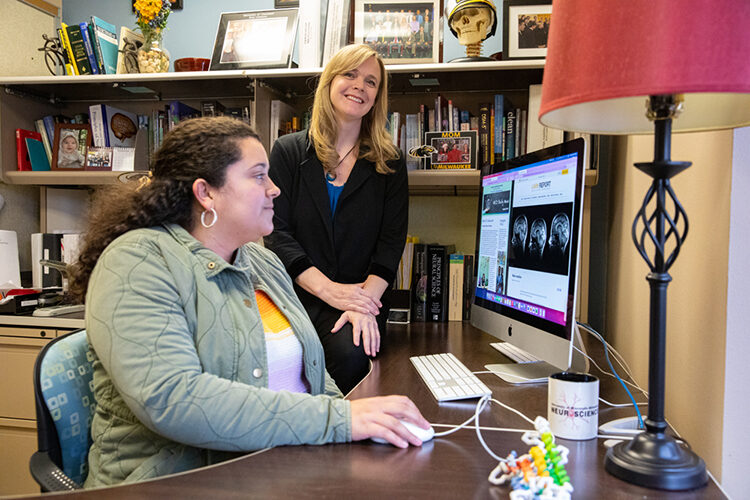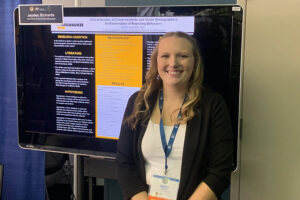How much worse was the mental health of “tweens” – children between the ages of 10 and 14 – during the height of COVID-19, compared to before the pandemic? Did adolescents who experienced loss, family strife and social isolation suffer more from depression and substance use than those with fewer pandemic-related stresses?

Using their involvement in a sweeping nationwide research effort, UWM researchers took the opportunity to gain insight into these pandemic questions.
The ABCD Study is the largest long-term study of brain and child health in the United States, tracking 12,000 adolescents, including 386 in Wisconsin. The aim is to identify what impact individual life experiences have on developing brains.
Here, Krista Lisdahl, professor of psychology, and Ashley Stinson, a graduate student in psychology in UWM’s College of Letters & Science, talk about how kids were able to manage – or not manage – additional stress from the pandemic and how it may have changed their brains. Listen to the full show at WUWM.com or on your favorite podcast app.
The ABCD project was already well underway when the pandemic hit. Could you provide some general background on that project?
Lisdahl: Sure. UWM is one of 21 research sites across the country that’s collecting lots of data from children and their parents on how young brains develop and mature.
This is a 10-year project funded by the National Institutes of Health. We’re trying to generate detailed data about what childhood experiences put people on different trajectories.
So we look into a complex mix of things, from family, peer and sociocultural factors to neighborhood factors as well as physical health. And then we pair those with individual brain imaging. We really want to understand these complex risk and resilience factors that are going to influence the brain.
In the last two years you’ve had the opportunity to do some research on how disruptions from the pandemic were affecting the ABCD participants. Tell about those sub-studies.
Lisdahl: We were definitely interested in how COVID-19-related factors might be influencing brain development. One of the first COVID sub-studies Ashley and I worked on was comparing substance use patterns before the pandemic and after, controlling for age.
Overall, substance use was stable for the first six months of the lockdown. And COVID infection or worry about COVID didn’t seem to be linked with substance use.
We also found, in several studies, evidence of resilience. In one of the studies, we found that households with lower economic status did have increased COVID-19 disease burden. But they also had more family communication, especially where parents were explaining the “whys” – why social distancing and masking was necessary, and why school was disrupted. This gave kids reassurance, which seems to be very protective for youth mental health.
The data shows that parents who frequently checked in with their kids’ schooling had kids who felt better about remote learning. There was a lot more school satisfaction when parents provided the support to help kids work through their emotions.
On the societal level, what also came through was that experiencing discrimination and racism related to COVID-19 was linked to distress, especially in our teenagers of color.
Ashley, you were the lead author on a study of whether those with childhood adversity in their backgrounds had worse mental health during COVID compared to those who didn’t. Would you describe it more?
Stinson: For a little context, when I say “childhood adversity,” I mean experiences that kids might have had, like abuse, neglect or other family dysfunctions broadly. And, we know that individuals who experience childhood adversity are often set up on some trajectories that lead to negative health outcomes.
Our main findings were that youth who had experienced childhood adversity before the pandemic were experiencing poor mental health during the pandemic, and we found that was true regardless of race or ethnicity.
However, when looking at racial backgrounds specifically, we did see that minority youth experienced more worry about COVID or more COVID-related stress, which highlights again how their communities have been more impacted by COVID.
What do we already know about chronic early life adversity pre-pandemic?
Stinson: In addition to changes in brain structure, some studies that have shown there also are differences in the ability to process emotions or make decisions or inhibit responses.
We also have to think about how it might be impacting future brain development, which might lead to mental health outcomes like depression and anxiety, but also might confer future risk for substance use.
While we look at the effects later in life, it’s really important also look at childhood adversity while the children are actually experiencing it. Looking at it during adulthood isn’t enough since development is happening during adolescence.







